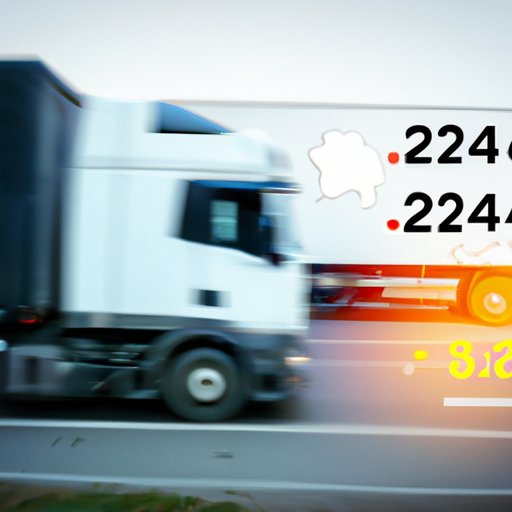
Introduction
Calculating average speed is a fundamental concept in physics and mathematics. It is essential to understand how to calculate average speed, as it has real-world applications in various industries. Whether it’s logistics or road travel, average speed is a crucial measurement that can help improve efficiency and safety. In this article, we will provide a comprehensive guide to calculating average speed, covering everything from the formula to real-world applications.
Step-by-step guide
The formula for calculating average speed is relatively simple. It is the total distance traveled divided by the total time taken.
average speed = total distance ÷ total time
When calculating average speed, it is essential to keep track of the units you are using for distance and time. If the units are not consistent, the resulting calculation will be incorrect.
Let’s say, for example, that we traveled 40 miles in two hours. We can calculate the average speed as follows:
average speed = 40 miles ÷ 2 hours = 20 miles per hour
It is crucial to organize the information needed to calculate average speed. Keeping track of the distance traveled and the time taken will make the process much more efficient and less prone to errors.
Real-world applications
Average speed is used every day in various industries, such as transportation and logistics. In logistics, it is used to determine the most efficient shipping routes and delivery times. In the transportation industry, it is essential for calculating travel time and determining potential delays.
Understanding average speed is crucial in these industries as it can help businesses improve their efficiency and reduce costs. For example, if a delivery driver knows their average speed, they can better plan their route and avoid potential traffic jams, ensuring timely delivery.
Theoretical analysis
To gain a deeper understanding of average speed, it is beneficial to break it down into its components – distance and time. Distance is a measure of the length between two points, while time is a measure of the duration between two events. Average speed is then the rate at which an object covers a particular distance in a given time.
The relationship between distance, time, and average speed is best understood graphically. A distance-time graph, for example, can be used to plot the distance traveled against the time taken. The slope of the line connecting these points is the average speed.
Visual aids
Visual aids can make understanding average speed more intuitive and straightforward. Graphs and charts can help visualize the relationship between distance, time, and average speed.
For example, a speedometer is a common visual aid that helps drivers understand their current speed. Similarly, a map with the distance and time between points explicitly marked can help plan a road trip.
Common mistakes
One common mistake people make when calculating average speed is using different units for distance and time. For example, if you measure distance in miles and time in minutes, your calculation will be incorrect. It is essential to use the same unit for both distance and time.
Another common mistake is failing to double-check calculations. Small errors in calculations can compound over time, resulting in significant discrepancies in average speed. Double-checking calculations can help catch errors early on, preventing costly mistakes.
Practice problems
Practice problems are a great way to build confidence in calculating average speed. Let’s try one:
Suppose you traveled 200 miles in 4 hours. What is your average speed?
Solution:
average speed = 200 miles ÷ 4 hours = 50 miles per hour
This skill has practical applications in everyday scenarios such as calculating travel time for a road trip. Knowing an estimated travel time can help better plan the trip, taking into account potential traffic jams and rest stops along the way.
Conclusion
Calculating average speed is an essential skill with real-world applications in various industries. Understanding the formula and the relationships between distance, time, and average speed is crucial to calculating it accurately. Visual aids, such as graphs and charts, can make the process more intuitive, while practice problems can help build confidence in the process. Double-checking calculations and ensuring consistent units for distance and time can help avoid common mistakes.





